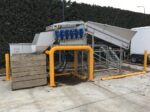Hawke’s Bay companies create world-first functional beverage
A collaboration between two Hawke’s Bay exporters has developed a new world-first beverage, a shelf-stable collagen and artesian water blend. The new Adashiko Collagen Refresh water is the first in the world to contain pure collagen and pure water – with no preservatives, no flavouring, colours or other additives and is set to introduce nutraceutical beverages to the hospitality industry. The company already has interest from customers in export markets around the world as it looks to capture a share of a $2 billion global collagen RTD category. Luci Firth, Adashiko CEO, says the new beverage is designed to rejuvenate the premium bottled water industry. She says the product was also ranged in local supermarkets within its first week of launch and is already exceeding initial sales forecasts. “The bottled water category in the hospitality industry typically consists of unflavoured still and sparkling varieties and has seen little innovation for some time. “Many New Zealanders will struggle to pay for bottled water and with so little value added by suppliers, restaurateurs and bar owners are left to compete head-on with tap water, while still having to cover the cost of supplying it. “The addition of a functional water product to this category means they will now be able to offer a competing product which they can justify retailing at a premium price point,” she says. Firth says the neutral-tasting, odourless collagen water can also be used as a mixer for cocktails. The development of the product took over a year and was a joint venture between her company and Hawke’s Bay manufacturer Parker Beverages. Doug Speedy, managing director of Parkers Beverage Company, says specialised equipment allowed them to pasteurise the product to a precisely controlled temperature. “After several iterations in the trial process, ultimately it was the purity of the […]










